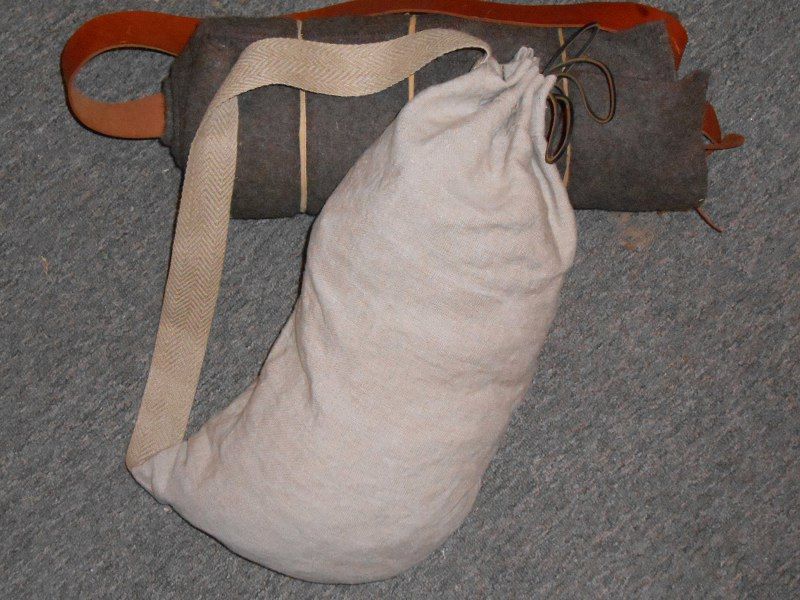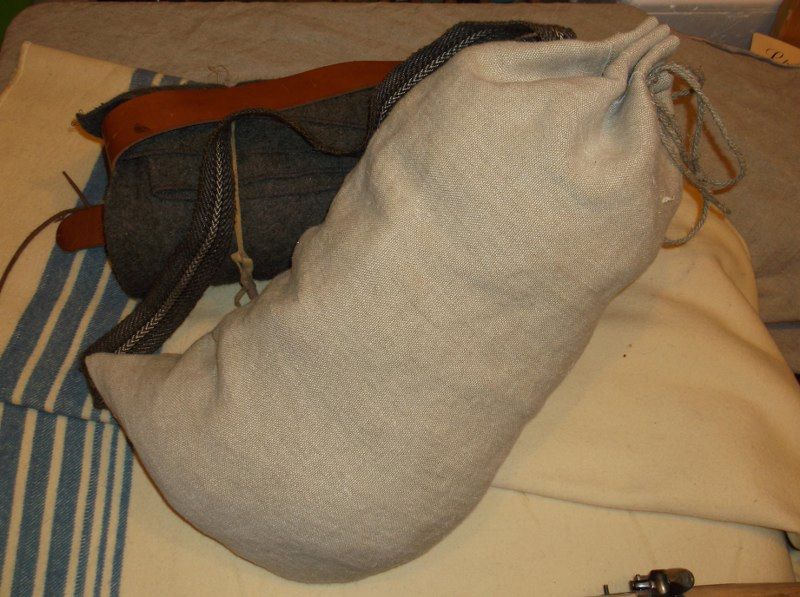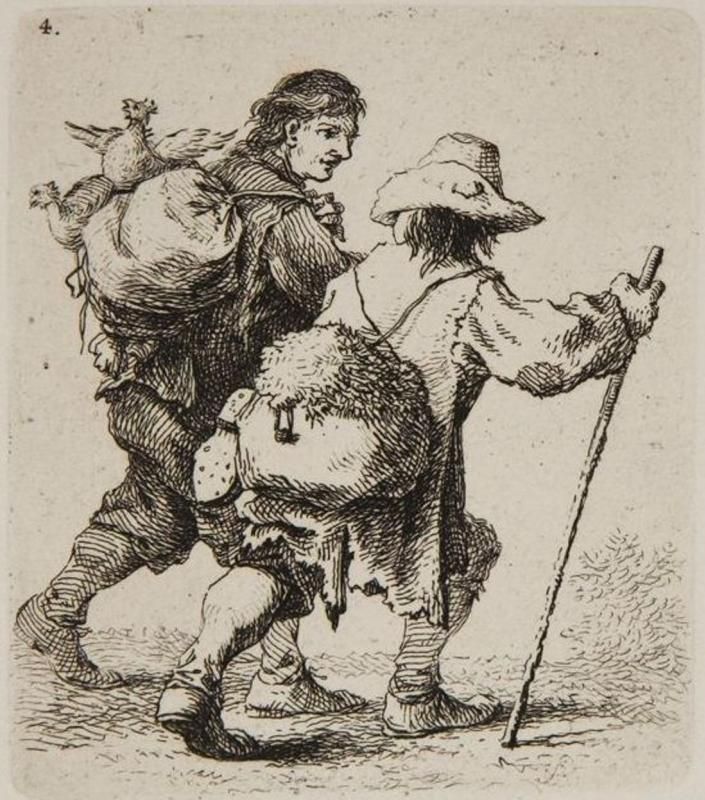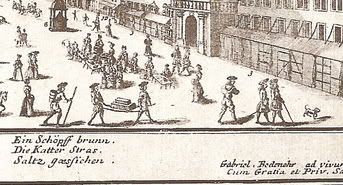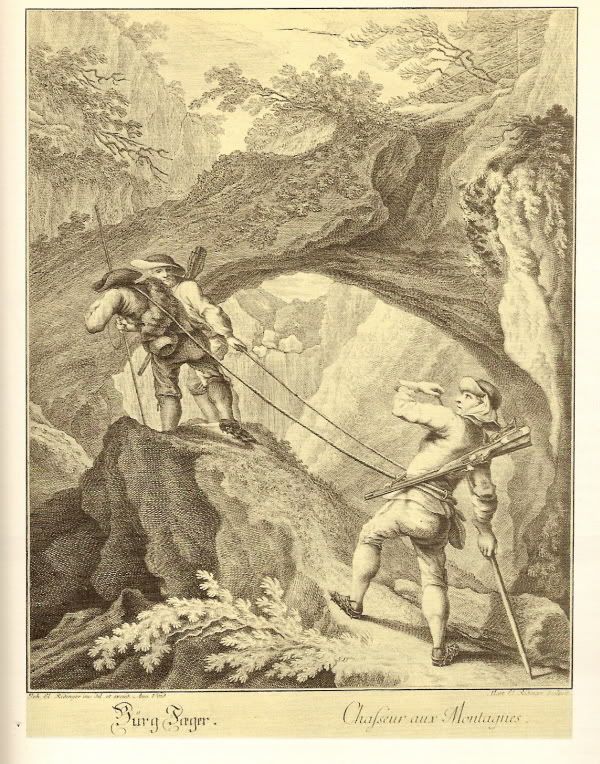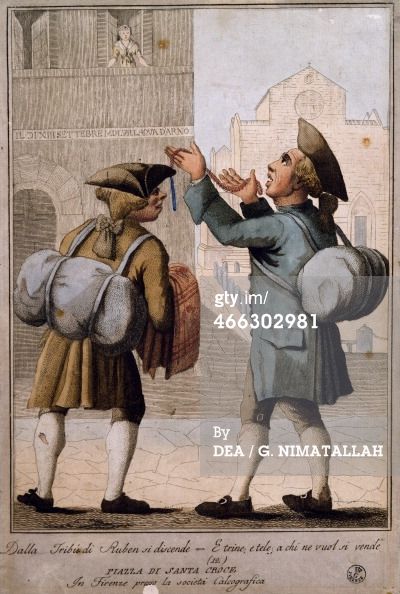Haversacks (or haversack-type shoulder bags) are nearly non-existent for non-military people.
:applause:
Way too many "civilians" are carrying haversacks, or haversack-ish packs, when they should have snapsacks. (imho) I think this is the after effect of the "possibles bag" left over from the peak of the rendezvous era...
The reason the snapsack is "better" than a haversack, is that it allows the bearer to control the weight up close to the body, and against the back. The haversack is a ration bag...so was meant to hold less weight, and even when properly worn (most folks sling them too low) they tend to bounce against the body. The snapsack often holds more property than a haversack that is being tasked as a pack, and a haversack is intended to be laundered, so was not water resistant, while the snapsack may be made so.
David Morier's pre- F&I portraits of soldiers, shows the 46th, 47th, and 48th regiment grenadiers with cowhide snapsacks with the hair still on, PLUS haversacks. This allowed the soldiers to remove their havesacks, and one private from each "mess" could then collect a ration for each man in his mess, then return the havesacks to his messmates. When the haversack became stained with juice from meat, etc, it could be washed.
Knapsack and rucksack (German) were not a word evolution, but were applied to two strap packs, with a flap, while often the old snapsack opened at one or both ends. The French merely called theirs a two-strap "haversack".
The "New Invented Knapsack" used by PA, MD, and VA troops at the beginning of the AWI was an attempt to combine the haversack and snapsack. So it had a flap over the cargo area, like a two-strapped pack, and had an extra compartment on the back side, for the rations. Thus, two design flaws. First, if one private was to draw rations for all of his messmates... he had to take everybody's belongings along for the chore. Second, if the "haversack" portion needed washing...the soldier had to empty his entire pack to do so.
LD





